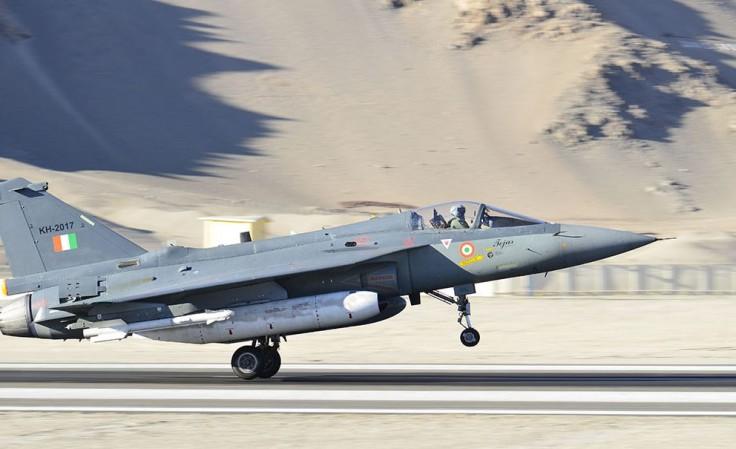
The Central government has revealed the number of projects that Defence Research and Development Organization is currently undertaking along with its probable dates for completion and has given reasons behind the delay in projects.
The information was shared by Minister of State for Defence Dr Subhash Bhamre in a written reply in the Lok Sabha on Friday.
According to Bhamre, 13 major projects, known as Mission Mode (MM) projects, are behind their schedule.
Light Combat Aircraft (LCA) Phase-II
The LCA Phase-II was originally slated for completion in December 2008.
The reasons for delay include:
- Technological challenges/ Embargoes
- Flight test program restrictions
Naval Light Combat Aircraft (LCA Navy Phase-I)
The LCA Navy Phase-I was originally slated for completion in March 2010.
The reasons for delay include:
- Due to co-dependence of basic infrastructure in Air Force and Naval versions
- Un-anticipated complexities faced in structural design
Rustom-II UAV and Development of Aeronautical Test Range (ATR)at Chitradurga
Rustom-II or TAPAS 201 recently made its first successful flight. This unmanned aerial vehicle (UAV) is a medium altitude long endurance (MALE) that is needed for reconnaissance and surveillance missions.
Rustom-II was originally slated to be completed in August 2016, but has been delayed to February 2017.
The reasons for delay include:
- Design modifications/iterations in sub-systems which led to development delays
- Delay in availability of certified LRUs and associated software
- Export denial of critical items and delay in procurement of imported payloads
- Delay in completion of ATR facility at Chitradurga
155 mm/52 Caliber Advanced Towed Artillery Gun System (ATAGS)
The ATAGS was originally slated to be completed in September 2015, but has been delayed to March 2017.
The reasons for delay include:
- Delay in realisation of ordnance and recoil system
- Delays in placing supply orders due to procedural issues for manufacturing of sub-systems.
Airborne Early Warning and Control System (AEW&C)
The ATAGS was originally slated to be completed in April 2011, but has been delayed to June 2017.
The reasons for delay include:
- Delay in finalising operational requirements and platforms including additional requirements by IAF
D-Jag System (Internal RWJ System for Jaguar DARIN III upgrade aircraft)
D-Jag System was originally slated to be completed in June 2015, but has been delayed to December 2016.
The reasons for delay include:
- Critical changes in main systems
D-29 System (Internal EW system for MiG-29 upgrade aircraft)
D-29 System was originally slated to be completed in December 2012, but has been delayed to December 2016.
The reasons for delay include:
- Delay in structural modifications tasks for MiG-29 aircraft being done at RAC MiG, Moscow.
EW Systems for capital ships, aircraft and helicopter of Indian Navy titled 'Samudrika'
Samudrika was originally slated to be completed in January 2016, but has been delayed to July 2017.
The reasons for delay include:
- Change in scope of ship-borne segment of the programme to include UETs and EA coverage from 180o to 360o for Project 'Shakti'.
Long Range Surface-to-Air Missile (LR-SAM)
LR-SAM was originally slated to be completed in May 2011, but has been delayed to December 2017.
The reasons for delay include:
- Mid-way major upward revision of performance requirements by IAI (Design Authority)
- Number of new technologies developed first time
- Number of technical iterations required to establish Transmit-Receive Module technologies for Radar.
- Design challenges in development of sub-systems by DRDO and foreign partner.
Air to Air Missile System: Astra
Astra was originally slated to be completed in September 2012, but has been delayed to December 2016.
The reasons for delay include:
- Technology/ design challenges
- Delay in availability of critical components
Kaveri Engine for LCA
Kaveri Engine for LCA was originally slated to be completed in December 1996.
The reasons for delay include:
- Development effort was underestimated, due to lack of experience
- Kaveri Core (Kabini) Engine development was initially not envisaged but added later based on experience of other engine houses
- Flying test bed trials was added as an additional project milestone as recommended by IAF and CEMILAC
- Lack of infrastructure for engine and component/ system level testing in India
- 1998 US Sanctions: Delay in delivery of critical components and systems
Advanced Light Weight Torpedo
Advanced Light Weight Torpedo was originally slated to be completed in August 2013, but has been delayed to December 2017.
The reasons for delay include:
- Indigenisation development of 120 kW warshot battery has taken time by the development agency HBL, Hyderabad.
- Non-availability of testing platform.
- Restriction in time slots for sea trials.
Medium Range Surface-to-Air Missile (MR-SAM)
MR-SAM was originally slated to be completed in September 2016, but has been delayed to March 2017.
The reasons for delay include:
- During the development stage, systems/sub-systems has undergone multiple iterations during design, development and hardware realisation.
- Changes in system configuration.
- Three verification flight trials included (not originally in the scope).
Measures taken to speed up projects
The government noted that DRDO has taken steps to complete the projects on time and the government has not constituted any Commission.
Below are some of the steps taken to complete the ongoing projects:
Consortium approach is being used for design, development and fabrication of critical components.
- Three-tier project monitoring approach has been instituted.
- Project Monitoring Review Committee (PMRC) and Project Appraisal and Review Committee (PARC) meetings are held regularly to monitor the progress of ongoing projects.
- Concurrent engineering approach has been adopted in technology intensive projects to minimise time-lag between development and productionisation of the systems.
- Information Technology and modern management techniques are being applied.
- Encouraging joint funding by users to ensure their commitment towards earliest completion.
- Organisational re-structuring: 1. Decentralisation of authority and responsibility with Director Generals (DGs) of Technology Clusters and Directors of laboratories/ establishments 2. High empowerment and accountability
- Involvement of Services & Production Partners during development process and reviews – to know their views in advance including finalisation of GSQRs.

















